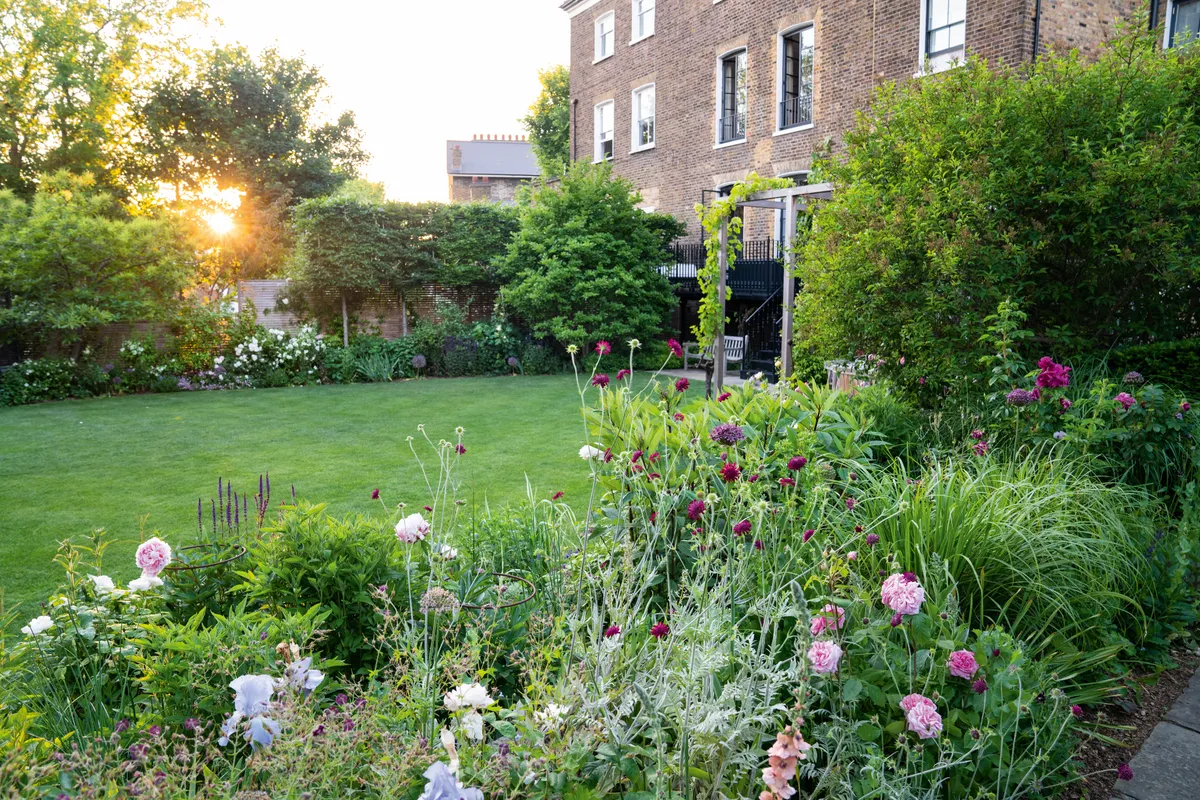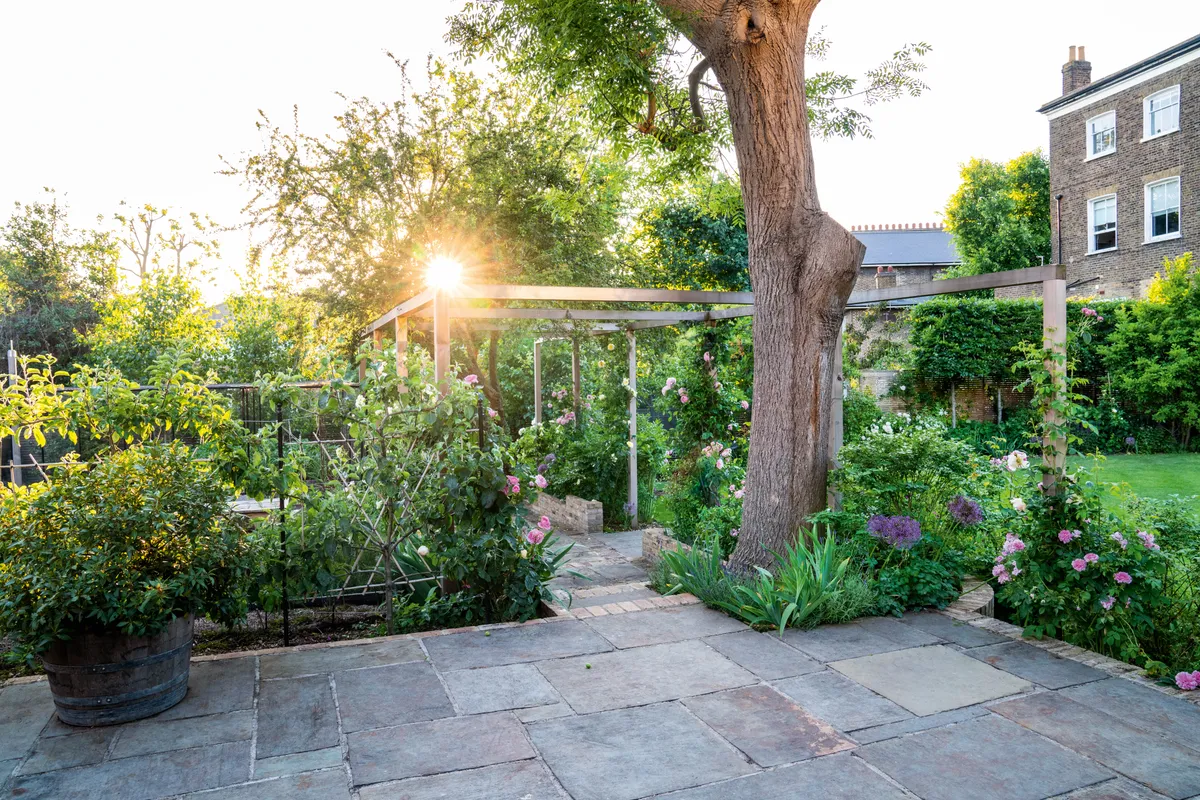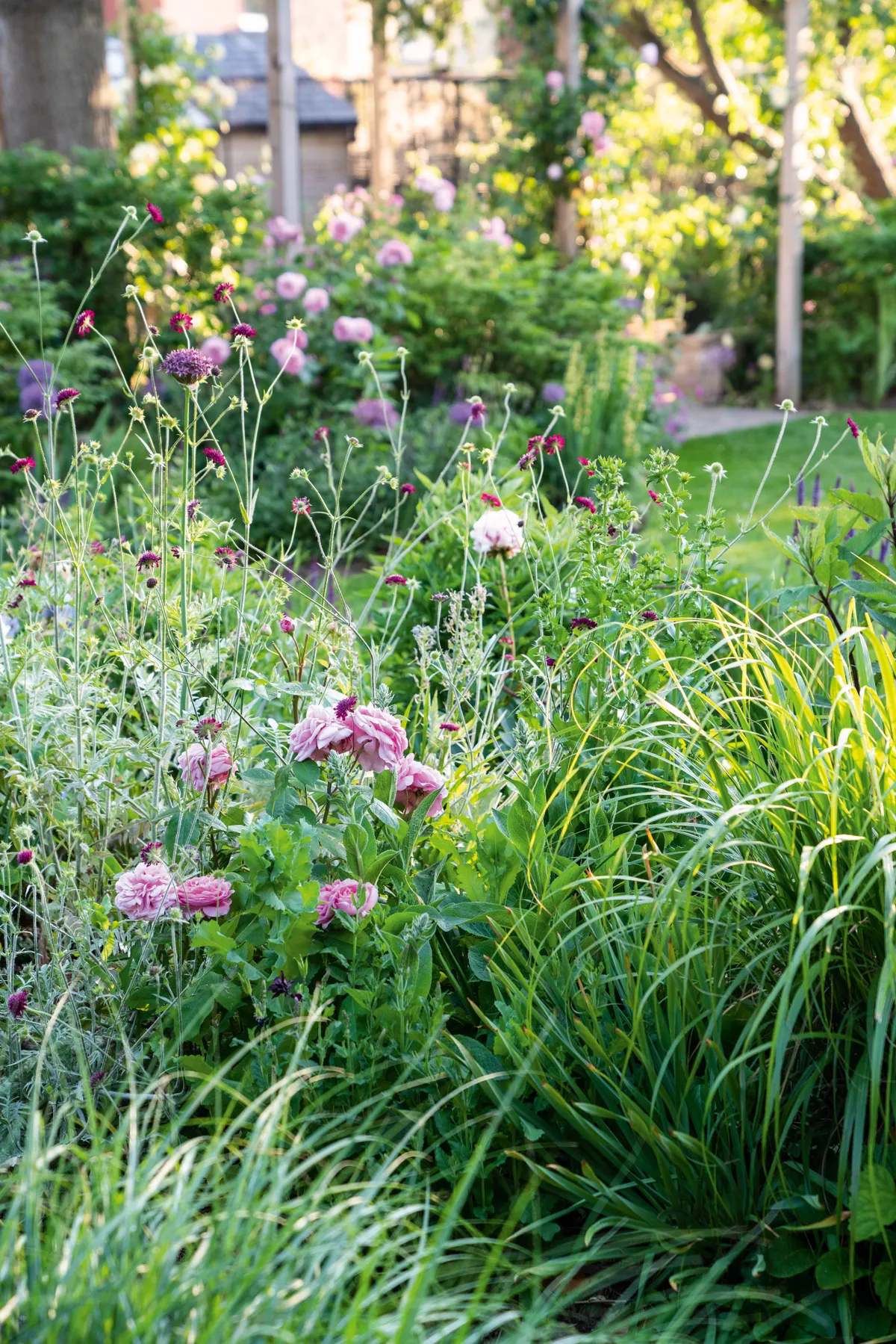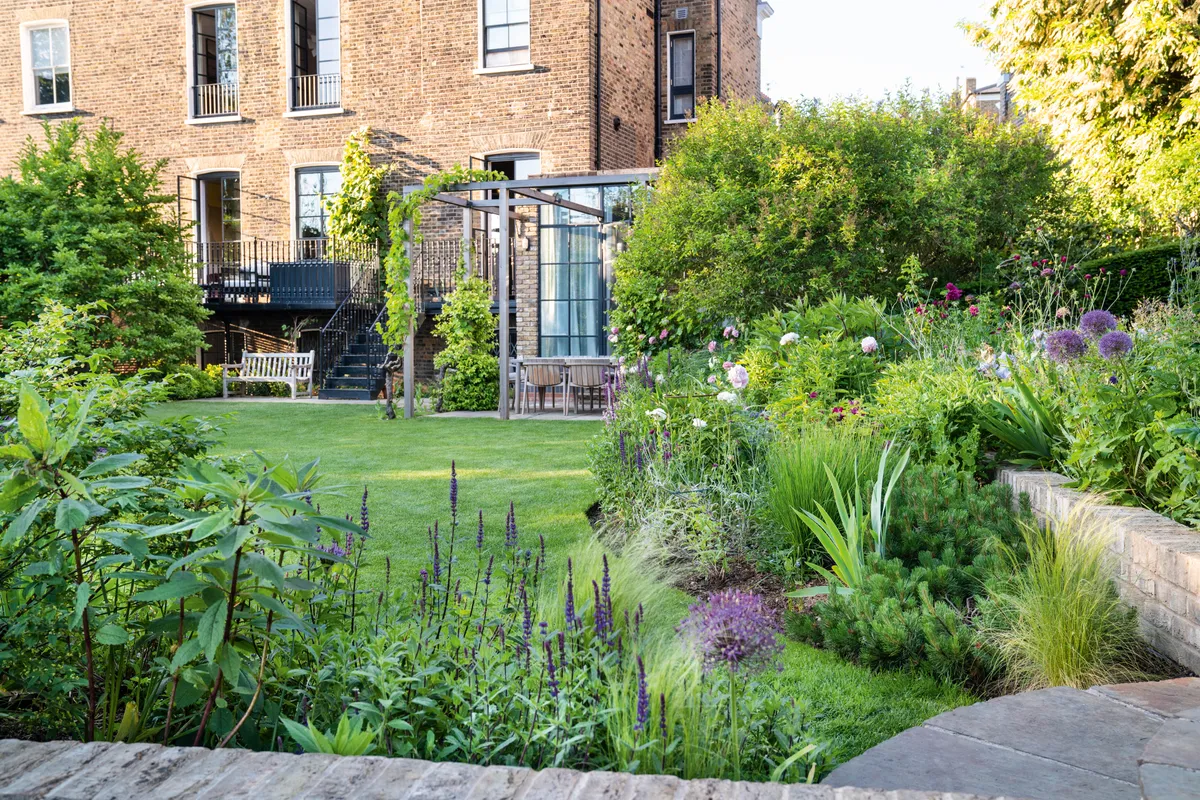Many garden design projects are born out of a desire for structure where there was previously none: “There was nothing but lawn and a few overgrown shrubs,” is a common refrain. This large garden in Highgate, north London, was slightly different in that, as wild and ramshackle as the garden was, the owners didn’t really want to change it.
“The house had previously been owned by a sculptor and the garden was filled with huge drifts of bearded iris and three-cornered onion,” says designer Matthew Wilson. “Although the lawn and the terraces were uneven and the pergolas were falling apart, the clients had fallen in love with the spirit of the place. It had a quirky, romantic and quite countrified feel, which they didn’t want to lose.”

Matthew’s brief, then, was to retain that feel while also introducing some apparently incongruous elements – the clients have two young boys, so space for football, table tennis and a trampoline were all essential, as well as places to eat comfortably. “I realised that, to be successful, I’d need to try to keep as much of the original garden as possible, reusing what was there to create spaces that were more suitable for family life,” says Matthew.
IN BRIEF
What Large city garden.
Where North London.
Size 27m x 31m.
Soil London clay.
Climate Temperate and increasingly unpredictable.
Hardiness zone USDA 9a.
One of the first things to do was to lift, divide and pot on as many of the plants as possible – the irises, some cardoons, asters and a few old roses – and to level the lawn, previously filled with island beds. Then the pavers – beautiful, hand-riven York stone – were lifted, cleaned, relaid and repointed, with additional stones added where required.
The layout, an axis of paths running up one side of the garden and across the back of the lawn towards a lovely, leaning, gnarled hawthorn, was left untouched, although the rickety old pergola to the rear was beyond repair. “We’ve replaced it with a simple, square-cut post pergola and I love the contrast of its clean, classic lines with the irregularity of the hawthorn,” says Matthew.

This subtle introduction of structure is evident in other areas of the garden too. A workaday, allotment-style veggie plot has been transformed into a much more attractive potager-style garden, complete with fruit cage and a large dining area among the beds. Similarly, Matthew expanded the terrace adjacent to the house and replaced its pergola with one to match that at the rear. “We managed to save some of the culinary vines that grew over the original trellis,” says Matthew, delighted. “They’ll be trained up the posts to form a canopy, like a living umbrella.”
Structure has also been introduced with plants – via pleached, box-head hornbeams and a 4m Magnolia stellata planted near the existing verandah to shield it from neighbouring properties, and via replanted domes of Ilex crenata, Pinus mugo and yew (Taxus baccata), not to mention numerous roses. In the long border, down the side of the garden, Matthew has made good use of buttressed yew, used to create planting bays, and to introduce additional winter interest. “So often, hedges are only used on a boundary,” says Matthew, “but they are a way of bringing architecture into the garden and are also fantastic for biodiversity.”

In keeping with the spirit of the original garden, the planting is unashamedly romantic, with many plants planted singly for the blown-in, self-seeded look the clients preferred. Knautia macedonica rubs shoulders with Salvia x sylvestris ‘Mainacht’, Allium hollandicum ‘Purple Sensation’ and a selection of peonies, including Paeonia lactiflora ‘Inspecteur Lavergne’ and P. lactiflora ‘Picotee’. The original irises have been joined by others including Iris ‘Deep Black’, I. ‘Jane Phillips’ and I. pallida – “one of the nicest scented irises, with a lovely sherbety smell,” says Matthew.

Matthew admits that the garden was challenging to create, but feels the effort was well worth it. “It made me really think about how we use materials and how we can reuse and reinvent things, partly from an aesthetic point of view, but also from an environmental standpoint. If you’re starting with good materials, as we were here, then it makes sense to repurpose them.”

Matthew kept as many plants – and as much of the romantic, country spirit – from the old garden as possible, including a large lilac to the right of the pergola.

Climbing roses are a real feature of this garden, and help give it its relaxed, romantic feel. Seen here are Rosa ‘Shropshire Lass’ and, behind, Rosa ‘Constance Spry’ with, elsewhere, Rosa Gentle Hermione (= ‘Ausrumba’) Rosa White Cloud (= ‘Korstacha’) and Rosa Tess of the d’Urbervilles’ (= ‘Ausmove’). Salvia rosmarinus makes a fitting surround to the dining area in the potager.
Reusing materials around the garden
“Reusing old materials is always a balancing act,” says Matthew. “Clearly, the environmental benefits are huge – you’re not giving rise to new manufacturing processes or additional shipping or haulage, and you’re reducing your waste to landfill. These things will all save you money too, but there will almost certainly be additional costs for the contractor when working in this way, due to the lack of uniformity of such materials.”
When materials are good quality, such as York stone, pantiles or old stock bricks, it’s worth dismantling them carefully, cleaning them up and reusing them as originally intended. If this is not possible, perhaps because you have run-of-the mill or broken bricks, you may be able to repurpose them in other ways – smashing them up and using them as a base for a shed or a greenhouse.
If this is not something you can do on site, or if you have no other use for the materials, it’s likely that they can be professionally separated and recycled, so do ask your contractor about this.
Find out more
Find out more about Matthew Wilson's work at matthewwilsongardens.com

